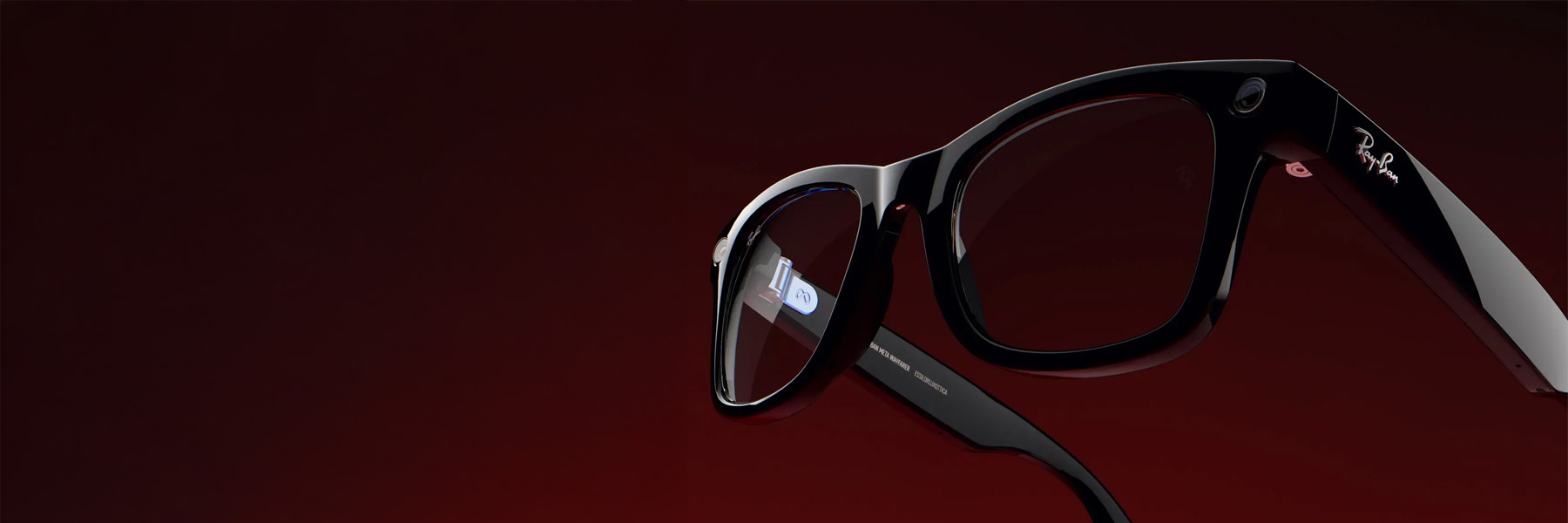
After a month of sporting my new Ray-Ban Meta Wayfarers, I can confidently say these smart glasses have revolutionised how I capture life’s precious moments, especially as a parent. Let me share my experience and thoughts on these high-tech shades.
The Good: Capturing Memories in a Snap
The standout feature of these glasses is undoubtedly the built-in camera. As a parent, I’ve found it to be a game-changer. No more fumbling for my phone and potentially missing those fleeting, adorable moments with my kids (when they’re not trying to get into trouble). With just a tap or a voice command, I can instantly capture photos or videos from my perspective.
The quality of the images and videos is impressive, especially considering they’re coming from a pair of sunglasses. The 12MP camera delivers crisp photos, while the 1080p video recording ensures I can relive those special moments in high definition. While the video quality might not match up to the latest iPhone, it’s more than good enough to share and captures quick moments beautifully.
What’s truly transformative is how these glasses have become my go-to adventure companion. On trips to places like the park and during bush walks, I’ve been able to snap photos and capture clips throughout my day – in far more spontaneous ways than my phone ever could. They’ve become my memory makers, capturing moments I might have otherwise missed.
The Meta AI Advantage: A Game-Changer for Smart Glasses
While I’ve been musing on the impacts of constant photo-taking, I can’t overlook one of the most exciting features of these Ray-Ban Meta glasses: the integration of Meta AI. This powerful tool elevates the experience, making them more than just a camera on my face.
Want to get a quick answer to a question that pops into my head during our family walk? I can just ask Meta AI without breaking stride.
Another AI Companion
The AI features feel like a bonus “Meta Byproduct” rather than the star attraction, which is actually a smart move by Meta. You can activate it by saying “Hey Meta,” followed by your question or command. A recent update even allows for more natural conversations, where the glasses automatically listen after giving you a response. It makes quick replies and follow-up questions feel more natural, though it does mean the glasses are listening more often (Thanks Zuck).
I’ve found myself having ongoing conversations with my glasses during long walks in my neighbourhood. It’s not really like the movie “Her,” where an AI becomes a personal, everyday guide – but it’s useful for topical questions. Saying that, in practice, the AI has its limits and awkward moments.
Multi-Modal AI: Seeing What You See
The truly futuristic aspect is the “multi-modal” AI, which taps into what the glasses see to generate information, translate text, or identify objects. To use this feature, you need to say, “Hey Meta, look and…” followed by your request. There’s a brief pause while the AI processes your request, during which you might find yourself frozen in a moment that can be a bit off-putting for friends nearby.
I’ve used this feature to identify plants and flowers, recognise landmarks, and even analyse complex scenes. It’s like having a knowledgeable companion who can see what you see and provide insights on demand.


The Quirks and Limitations
While impressive, the AI interactions can sometimes feel wooden, and there are moments when the AI simply doesn’t want to help anymore, reminiscent of the limitations we’ve seen with smart speakers and assistants.
The AI’s usefulness is also constrained by its lack of deep app integrations. While I can make calls, send messages, and connect to Spotify, I can’t tap into many of my iPhone’s features like Siri can. I can’t call an Uber, check on an Amazon delivery, or summarise my email. It’s a reminder that we’re still in the early stages of this technology, and there’s room for growth in terms of integration with our digital lives.
Privacy Considerations
Of course, as with any AI technology, there are privacy considerations to keep in mind. Meta has been transparent about their data practices (whether you believe this or not), and I appreciate the control I have over how the AI interacts with my personal information. However, it’s crucial to be mindful of when and where you use these features, especially in private or sensitive environments.
All in all, while I’m still navigating the balance of capturing moments versus living them, Meta AI has certainly made the process smoother and more intuitive. It’s transformed these glasses from a simple recording device into a smart companion that helps me stay organised, informed, and connected – all while keeping my hands free for the important stuff, like holding my kids’ hands or pushing the swing at the park.
The Not-So-Good: A Tight Squeeze
Now, let’s address the elephant in the room – or should I say, the watermelon on my shoulders. These glasses are a bit snug on my admittedly larger-than-average head. It’s like trying to fit a beach ball into a baseball cap. I’m starting to think my head has its own gravitational pull, attracting nearby objects and making everything feel a tad cramped.
The Weight of Technology
While not unbearably heavy, these glasses do have a noticeable heft to them. It’s a reminder that you’re wearing a mini-computer on your face. However, I found that after a few hours of wear, I got used to the weight, and it didn’t significantly impact my comfort.
Battery Life: The Achilles’ Heel
One significant drawback is the battery life, which is perhaps the biggest obstacle to these glasses becoming a truly all-day device. I find the battery running out by around noon when I’ve started the day with them around 7.30 a.m. This short battery life means you’ll likely need to charge them at least once during the day if you’re a heavy user.
Meta includes a nice-looking case that doubles as a charger, which is both practical and stylish. The glasses snap in, and little metal contact pins on the bridge charge the glasses’ onboard battery. This case can charge the glasses eight times, which is impressive and reminiscent of how Apple’s AirPods charging case feels over a week of use. The case itself charges via USB-C. (It’s also got a cool LED on the case)
The glasses recharge relatively fast in their case – less than an hour – but this quick charge comes with a catch. The glasses can only be charged in their case, which means you need to take them off to charge them. I can imagine that for those using these as prescription glasses, this presents a real problem. It means you need to carry a spare pair of glasses or spend part of my day with non-functional smart glasses. (not so smart)
If you’re using these as non-prescription sunglasses, taking them off to charge might not be as big an issue. But for those relying on them for vision correction, it’s a significant inconvenience.
This battery limitation keeps me from fully embracing these as a truly all-day device. It’s a reminder that while we’re getting closer to the dream of always-on, always-available smart glasses, we’re not quite there yet. The technology is impressive, but it’s still constrained by the physical limitations of battery technology.
Despite this, the Ray-Ban Meta glasses are the closest I’ve experienced to an all-day wearable AI device (outside of my Apple Watch). The convenience of the charging case does mitigate some of the battery life issues, but it’s something to keep in mind if you’re considering these glasses for all-day use.
The Deeper Question: Impact on Our Children
As I’ve been enjoying my Ray-Ban Meta sunglasses and the ease with which I can capture moments with my kids, I’ve also found myself pondering a deeper question: What impact might this constant documentation have on our children?
The Performance Pressure
It’s easy to get caught up in the excitement of capturing every smile, every achievement, every cute moment. But I’ve noticed something concerning: my kids are becoming increasingly aware of the camera. They’re starting to pose automatically, flashing those picture-perfect smiles on cue. It’s adorable, sure, but it’s also made me wonder: Are we inadvertently teaching our kids to perform rather than just be?
The Psychology of Always Being ‘On’
As a parent in the digital age, I’m becoming increasingly aware of the potential psychological effects this constant photo-taking might have:
- Disruption of Natural Behaviour: Our kids might be missing out on fully immersing themselves in experiences, always conscious of being recorded.
- Performance Anxiety: There’s a risk of our children developing a form of performance anxiety, feeling pressured to always look or act a certain way.
- Authenticity vs. Curated Reality: Are we unintentionally encouraging our kids to suppress their genuine emotions in favour of a camera-ready facade?
The Verdict: A Thumbs Up with a Few Caveats
All in all, I’d recommend the Ray-Ban Meta sunglasses, especially to fellow parents who want to capture life’s moments without constantly reaching for their phones. The convenience and quality of the camera features alone make them worth considering, and at $475, they offer a lot of value compared to other emerging AI wearables.
However, there are a couple of improvements I’d love to see in future iterations:
- A centred camera: The current offset can sometimes lead to slightly skewed perspectives in photos and videos.
- AI-assisted framing: It would be fantastic if the glasses could use AI to adjust the framing, ensuring the subject is always perfectly centred, regardless of where you’re looking.
- Size options: For those of us blessed (or cursed) with larger craniums, a wider fit option would be greatly appreciated.
- Improved battery life: A full day’s use without needing to recharge would make these truly indispensable.
Despite these minor gripes, the Ray-Ban Meta sunglasses have earned their place in my daily life. They’ve allowed me to be more present with my family while still capturing those precious moments. They’re practical and, oddly, transformative. I forget I have them on, and then, suddenly, I realise I’ve gotten used to them when I start talking to myself and tapping my glasses to snap photos.
As we move towards a future of everyday AR glasses and more advanced wearable AI, these smart glasses from Meta feel like a happy middle ground – something new and casual. Just be prepared for a bit of a squeeze if you’re part of the big-head club like me, and don’t forget to carry that charging case!
Follow up post: Unlocking Meta AI on Your Ray-Ban Meta Glasses


